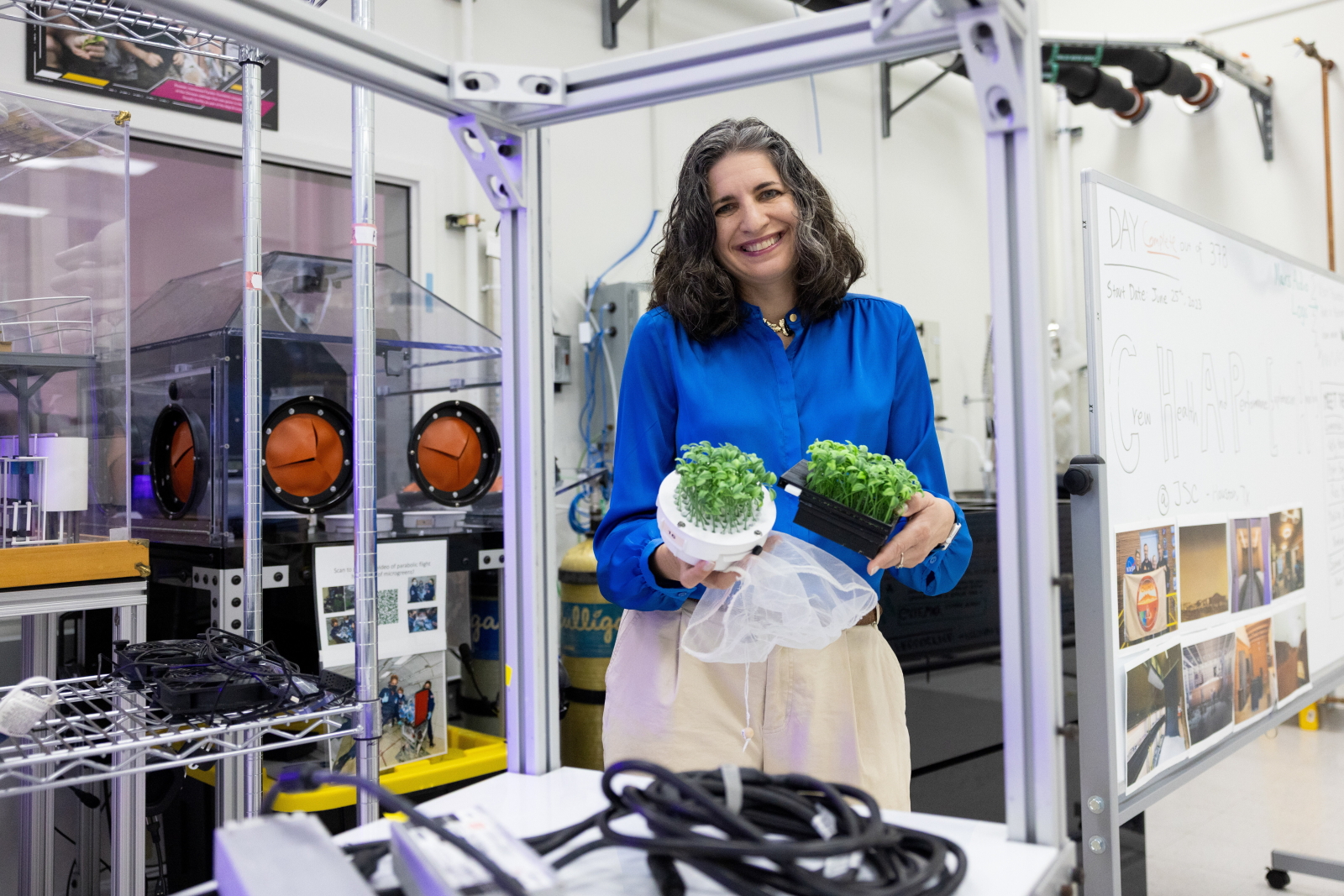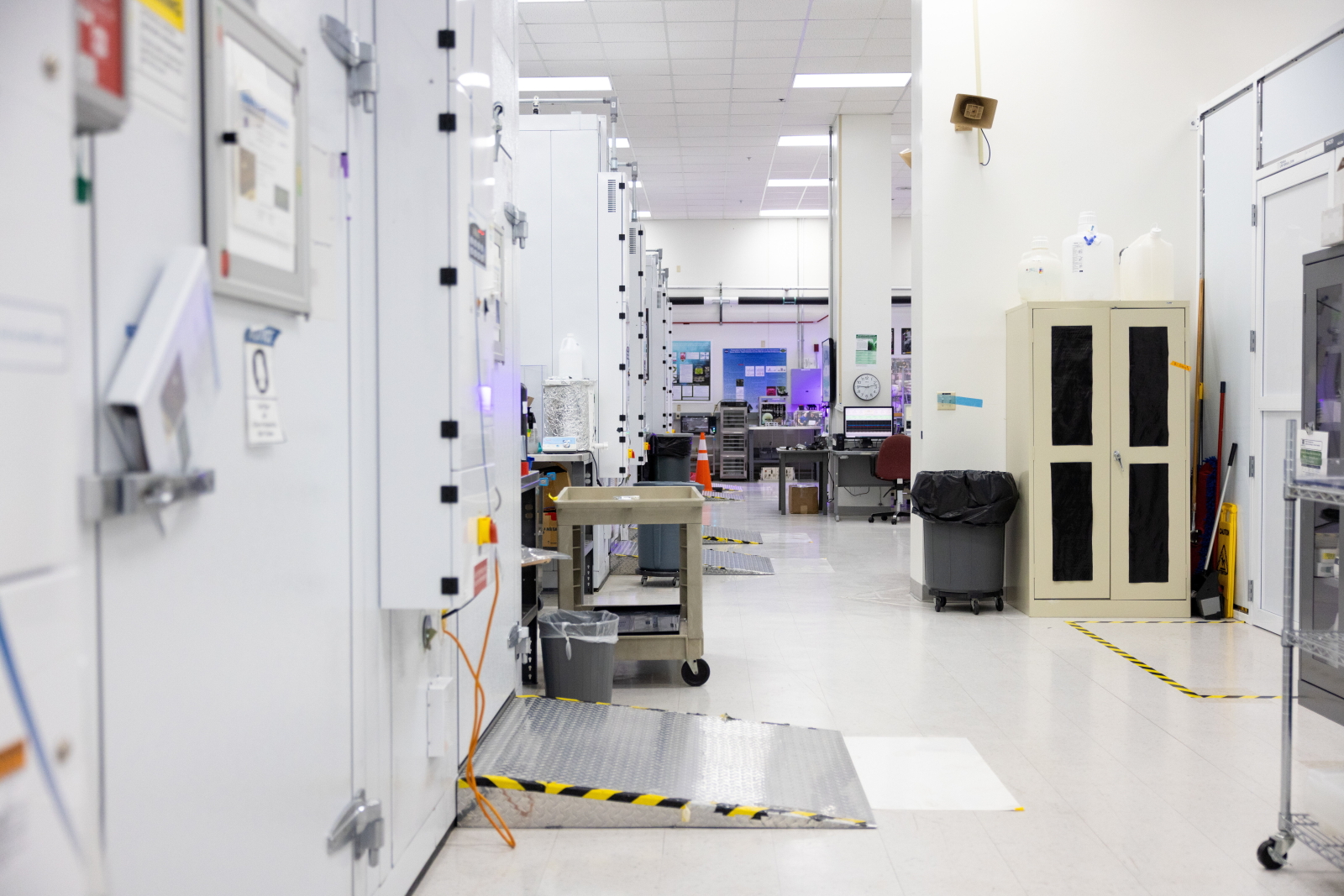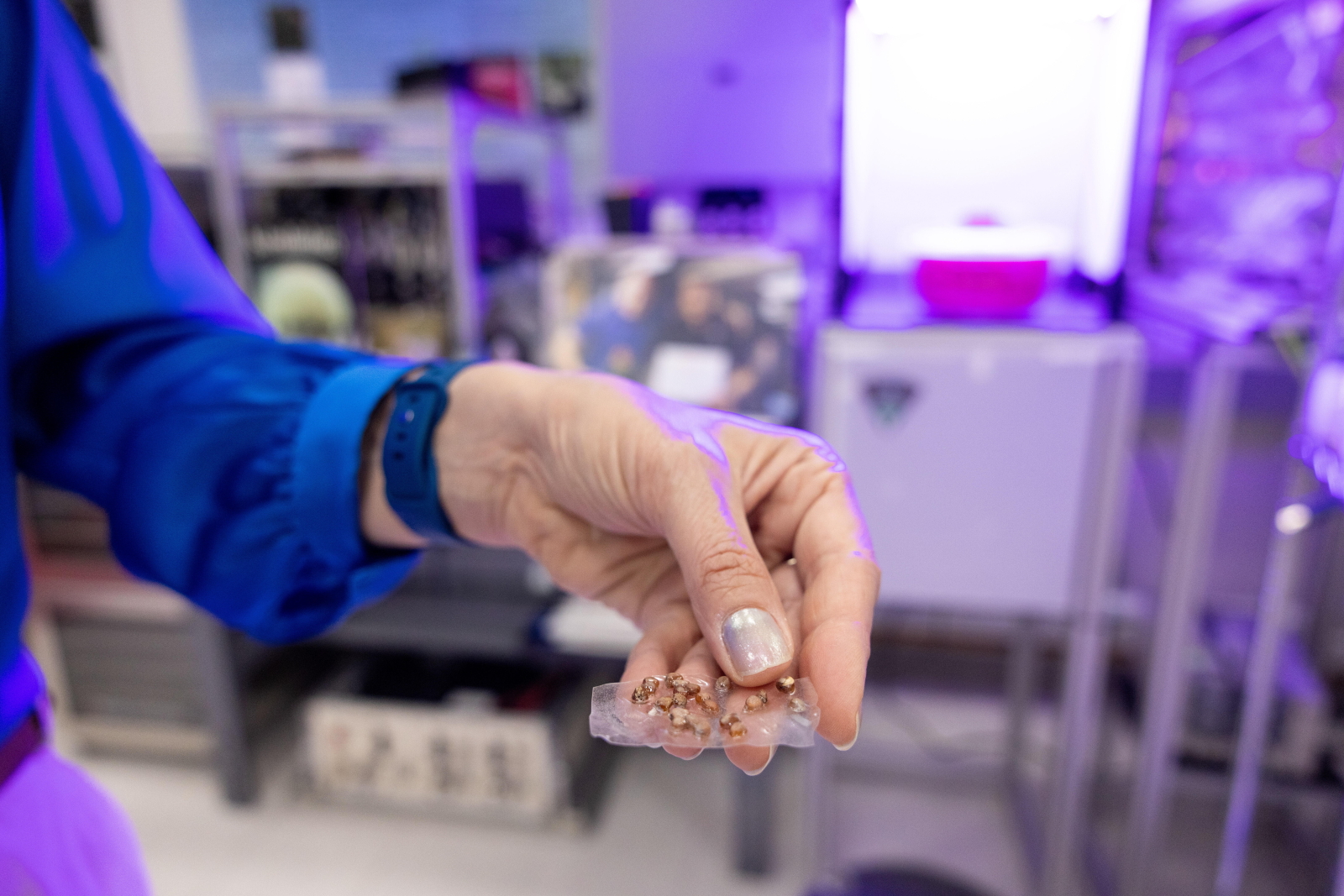NASA's "Gardener" for PAP: We have given up on sending Chinese cabbage into space

Longer space missions require, among other things, a diversified astronaut diet. Scientists are therefore testing the possibility of growing wheat, barley and peas in orbit. A miniature cucumber does great, but Chinese cabbage fails - NASA's "space gardener", Dr. Gioia Massa, told PAP.
The development of space farming systems is one of the most important issues for long-term missions, says Dr. Gioia Massa, an expert in plant biology and senior NASA project scientist. Her team at the Kennedy Space Center (KSC) in Florida (USA) is working, among other things, on solutions to provide astronauts with food.
The scientist invited PAP to her laboratory at the Space Systems Processing Facility (SSPF) at KSC.
"The biggest challenge in microgravity conditions is providing plants with water and nutrients. Water behaves very strangely in a state of weightlessness. This leads to problems, among others, with providing the right amount of water to the root zone," the expert notes.
Scientists are also working on methods of soil ventilation and temperature control.

Dr. Massa's team is examining how these factors affect plant development in a so-called pictorial larder – an airtight chamber in which potted plants stand on metal shelves. Waldorf lettuce is currently growing in one of the chambers, and some of its specimens are clearly wilting. This is because some plants are not watered enough, some too much, and only some of them get as much water as they need, says the NASA expert. The same applies to nutrients, temperature, and carbon dioxide levels in the soil.
"We induce different types of stress in plants. The camera monitors the plants in different light ranges, and we also use thermal imaging. We can detect changes long before the human eye sees them. This allows us to quickly change conditions before the plant dies," explains Dr. Massa.
The solutions developed in her laboratory may in the future be used to create robots that will supervise space crops with little involvement of astronauts or autonomously.
Scientists at the KSC lab are also studying the effects of cosmic radiation on plants. On Earth, magnetic fields protect against it, but on spacecraft, the International Space Station (ISS), the Moon or Mars, there is no such natural shield. "This can be a problem for transporting and long-term storage of seeds. Fortunately, seeds are more resistant than growing plants," admits Dr. Massa.
As she said, there are currently two plant cultivation systems operating on the ISS: "Veggie is a simple and energy-efficient system, but it requires a lot of work. In turn, the Advanced Plant Habitat (advanced plant habitat – note by PAP) consumes much more energy, but many activities related to cultivation and control are performed remotely by the ground team, so the astronauts are not as burdened with work."

The team led by Gioia Massa is designing the Ohalo III installation, which is to combine the advantages of both systems. "Ohalo III will be a testing ground for plant production. It will provide internal water recycling, and will draw air from the space station environment. It is to be delivered to the ISS in 2026," the biologist informed.
Many of the species and varieties that Dr. Massa studied were tested, among other places, in analog habitats in various places on Earth. An analog habitat is a closed environment (e.g. under a dome) simulating conditions on the ISS, the Moon, or Mars.
Dr. Massa considers one of the most promising species – which grew intensively in the habitat at the German Polar Station Neumayer III in Antarctica and is now also grown at the Kennedy Center – to be the miniature cucumber variety picowell. Because cucumbers are climbing plants, scientists have designed supports for them, which astronauts will be able to print in space on 3D printers.
"We are now preparing for a second cucumber-growing test in a simulated Martian environment at NASA's Lyndon B. Johnson Space Center in Texas. This will be a Crew Health and Performance Exploration Analog (CHAPEA) mission," said Dr. Gioia Massa.

CHAPEA is a series of NASA missions that are intended to simulate a year-long stay on Mars.
Part of the image pantries in Dr. Massa's lab are empty. Soon they will be filled with herbs, various types of lettuce, mustard, beets, purslane and radishes. Many of them have already grown on the ISS, some will soon be grown there for the first time.
"Many other crops have been tested on the ISS over the years, including wheat, barley, and peas. There were also many model species – those used in genetic research – such as Arabidopsis Heynh . from the Brassicaceae family, which is the lab rat of plants, or the grass Brachypodium. Not all plants adapted. Chinese cabbage fared the worst; we decided not to send it into space," admitted Dr. Gioia Massa.
The Kennedy Space Center is also working on methods for planting plants on the ISS. As the researcher said, individual seeds there tend to "escape" from hands or leaky containers and float in microgravity. That's why there are sewing machines in the lab. Dr. Massa explains: "We sew pillows with vegetable plants. We sew the substrate, fertilizer and seeds into the fabric - it's a ready-made package to start growing on the ISS."
Until recently, seeds were also glued to strings that were then placed in the substrate. Scientists have improved this method, however. The expert demonstrated thin strips of transparent, flexible plastic with smaller and larger dots placed at regular intervals. "It is a polymer film in which we have placed the seeds. You can put it in containers with the substrate, and the polymer will completely dissolve, releasing the seeds," she explains.
He also mentions that one of the Expedition 46 astronauts - Scott Kelly - managed to grow the first flowers, zinnias, on the ISS in 2016 (although not without difficulty). "When the plants started to wither, the Veggie team on Earth created the 'Zinnia Care Guide for the Orbital Gardener'. Thanks to him, Kelly saved them and even made a bouquet out of them," describes Dr. Gioia Massa.
Today, instead of soil, a special substrate that releases water-soluble fertilizer is used in space. However, NASA plans to replace substrates with reusable substrates or hydroponic cultivation without a substrate at all.

Researchers are also trying to create new plants specifically for cultivation in space. "Scientists funded by NASA have developed several more resistant species that will grow better on spaceships. Others have created genetically modified plants that can produce pharmaceutical compounds useful to astronauts," the PAP interviewee recalls.
According to Dr. Massa, providing astronauts with a vegan diet, or an exclusively plant-based diet, is also a thing of the future. "It would require large crops, which means allocating a large area for cultivation," he notes. Another NASA research center, the Ames Research Center in California, is working on, among other things, the production of synthetic animal protein for space travel.
Plants can play many roles in space. "We are currently investigating the beneficial effects of plants on astronauts' well-being. In addition, plants capture carbon dioxide during photosynthesis and produce oxygen necessary for breathing, and in space oxygen is worth its weight in gold. They can also help purify water: they take in polluted water and release clean water in the form of water vapor. I am sure that we will discover many other uses for plants," she concluded.
From Cape Canaveral Anna Bugajska (PAP)
Science in Poland
abu/ bar/ zan/ amac/
naukawpolsce.pl





